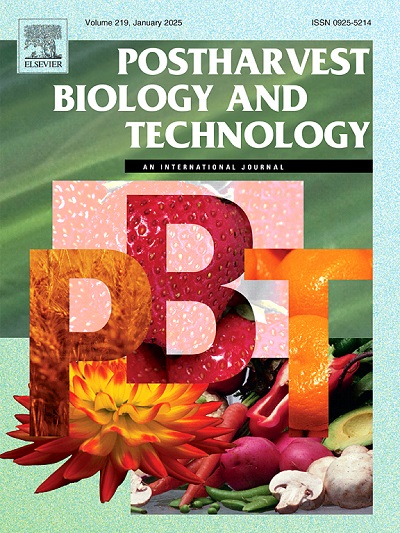Bitter almond gum-fish gelatin conjugate coatings extend the storage of button mushrooms
IF 6.4
1区 农林科学
Q1 AGRONOMY
引用次数: 0
Abstract
Button mushrooms (Agaricus bisporus) have a short shelf-life due to high moisture content and lack of a protective layer, leading to browning and softening. This study aimed to investigate the effects of spraying different concentrations (1 %, 2 %, and 3 % w/v) of bitter almond gum: fish gelatin conjugate coating on the quality of fresh mushrooms during 20 d of cold storage. The results showed that the spray-coated samples maintained better quality parameters than uncoated samples during storage. SEM micrographs confirmed formation coating on the surface of mushrooms and improvement in the microstructure. Mushrooms treated with 2 % conjugate showed considerable improvement in firmness retention, reduced browning, and sensory indices. At the same time, mushrooms coated with 3 % conjugate effectively retained phenolic content, DPPH radical scavenging, and enzyme activities. Lower microbial counts were observed in proportion to coating concentrations. The principal component and hierarchical cluster analyses were conducted to illustrate the effects of variable and conjugate concentration on extending the shelf-life of mushrooms and categorize the samples based on their performance. This study suggests that using conjugate coating can be a practical solution for prolonging the shelf life of button mushrooms and may also be beneficial for improving the post-harvest quality of other fruits and vegetables.
求助全文
约1分钟内获得全文
求助全文
来源期刊

Postharvest Biology and Technology
农林科学-农艺学
CiteScore
12.00
自引率
11.40%
发文量
309
审稿时长
38 days
期刊介绍:
The journal is devoted exclusively to the publication of original papers, review articles and frontiers articles on biological and technological postharvest research. This includes the areas of postharvest storage, treatments and underpinning mechanisms, quality evaluation, packaging, handling and distribution of fresh horticultural crops including fruit, vegetables, flowers and nuts, but excluding grains, seeds and forages.
Papers reporting novel insights from fundamental and interdisciplinary research will be particularly encouraged. These disciplines include systems biology, bioinformatics, entomology, plant physiology, plant pathology, (bio)chemistry, engineering, modelling, and technologies for nondestructive testing.
Manuscripts on fresh food crops that will be further processed after postharvest storage, or on food processes beyond refrigeration, packaging and minimal processing will not be considered.
 求助内容:
求助内容: 应助结果提醒方式:
应助结果提醒方式:


